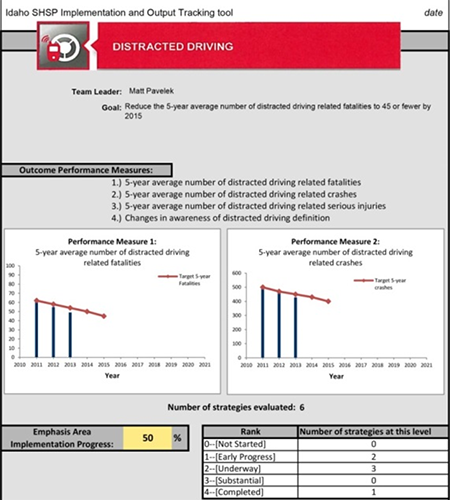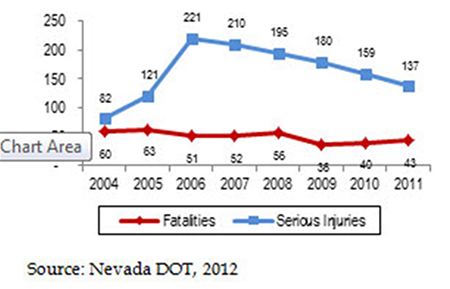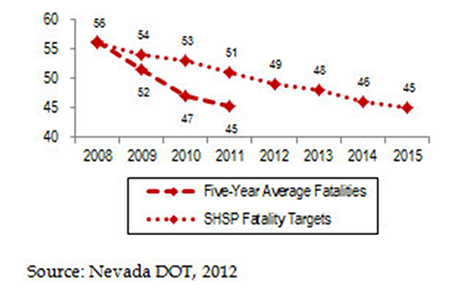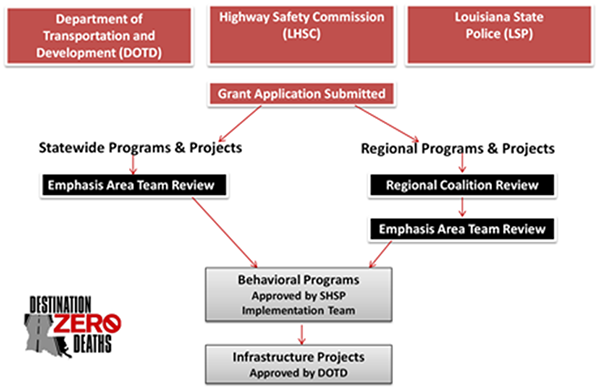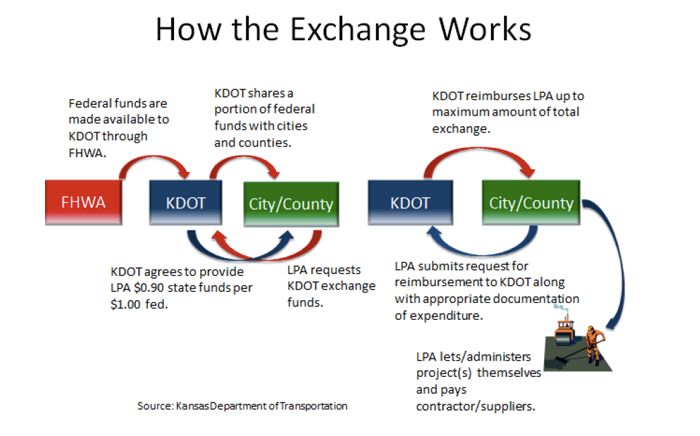Washington Builds Evaluation into its Strategic Highway Safety Plan
The Washington practice is discussed after the following introduction about Strategic Highway Safety Plan (SHSP) evaluation.
Other states in this SHSP Evaluation Noteworthy Practices series: ID and NV
Planning for Evaluation Should Begin When the SHSP is Developed
The Highway Safety Improvement Program (HSIP) requires States to evaluate their Strategic Highway Safety Plan (SHSP) to ensure the accuracy of their SHSP priorities and proposed strategies. Furthermore, evaluation helps States answer basic questions about the progress of their SHSP such as:
- What are we trying to do?
- How well are we doing it?
- How can we improve?
States that have successfully integrated evaluation into their SHSP process have realized the opportunity it provides to strengthen their SHSP efforts. Benefits include demonstrating the SHSP's contribution to transportation safety; uncovering challenges in prioritizing or implementing programs and strategies; determining progress in meeting SHSP goals and objectives, and; validating emphasis areas and strategies, or revealing the need to revise them.
Following are examples of how States have put evaluation into action.
- Outcome performance measures: how they will measure progress towards their goals and objectives.
- Priority strategies: those evidence-based or promising strategies that have the greatest potential to help them reach the emphasis area goals and objectives.
- Output performance measures: activity measures that help document program implementation.
It is never too early to institute evaluation; in fact, planning for evaluation should begin when the SHSP is developed. During the early stages of SHSP development attention should be given to how progress will be measured and success determined.
Washington's Practice
Washington Develops an Evaluation Plan
Washington State has developed an evaluation plan for their 2013-2016 SHSP, which they call Target Zero.
In their Target Zero plan, Washington documented how they intended to develop an evaluation plan to guide their SHSP evaluation. Early in 2014, representatives from the Washington State Department of Transportation (WSDOT) and the Washington Traffic Safety Commission (WTSC) convened to determine how to facilitate the overall SHSP evaluation.
“FHWA's assistance in creating the framework for evaluating our SHSP has been central to getting that work off the ground. We've discussed evaluation as a priority but weren't able to make it happen until FHWA offered their expertise and technical tools. Our partnership with FHWA has helped jumpstart a meaningful evaluation of our SHSP.”
- Chris Madill, Deputy Director
Washington Traffic Safety Commission
Washington decided it would conduct a performance evaluation to determine how effective the SHSP has been in meeting its goals and objectives (outcomes), and the status of the implementation of their SHSP strategies (outputs). The evaluation plan captures these elements, which track back to their SHSP:
- Goal(s) and objectives
- Outcome performance measures: how they will measure progress towards their goals and objectives
- Priority strategies: those evidence-based or promising strategies that have the greatest potential to help them reach the emphasis area goals and objectives
- Output performance measures: activity measures that help document program implementation
- Tracking and data needs: the data they need to track the strategies and who will be responsible for coordinating this data
Washington also uses a tracking tool to record progress in meeting their goals and objectives and the status of their implementation activities.
Washington plans to use their evaluation results to help guide the development of their SHSP update, particularly the strategies in the next plan. It will also use the results to provide updates to partners such as National Highway Traffic Safety Administration (NHTSA) and Governors Highway Safety Association (GHSA), to inform leadership on key initiatives, and inform the Governor's office and legislators.
Figure 1. Washington SHSP Implementation and Output Tracking Tool

Contact
Chris Madill
Deputy Director
Washington Traffic Safety Commission
(360) 725-9884
wtsc.wa.gov

